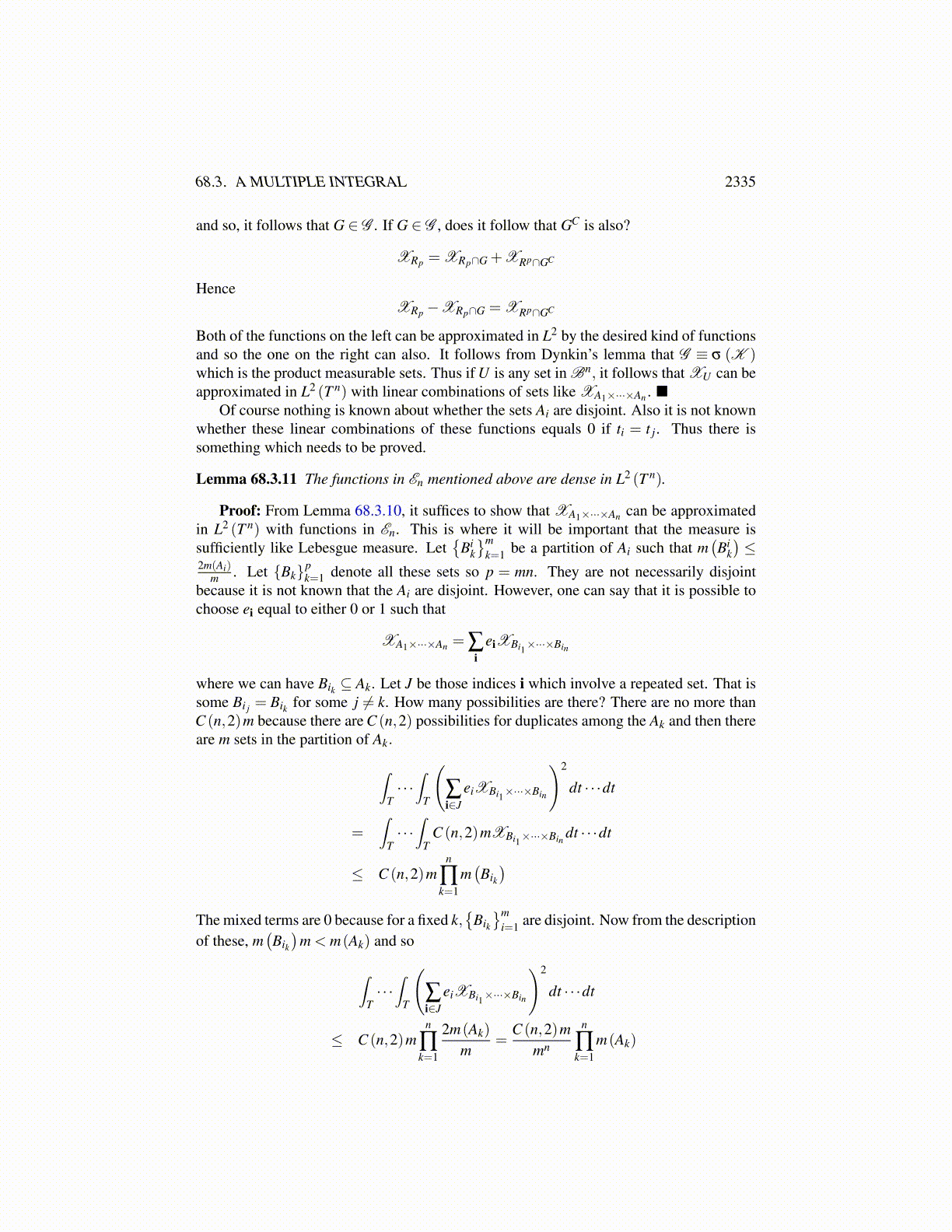
68.3. A MULTIPLE INTEGRAL 2335
That product is of independent random variables. Recall any collection of the W (Ak) arenormally distributed and also the covariance is diagonal and so these will all be independentrandom variables. If any one of them is not repeated, say W
(Aik
), then
E
(∏
kW(Aik
)W(A jk
))= E
(W(Aik
))(stuff) = 0
It follows that to get something nonzero out of this, all Aik are repeated. That is, you musthave j = i and 68.3.18 reduces to E (In ( f ) In (g)) =
(n!)2∑
i1<···<in
ci1,··· ,indi1,··· ,inE
(∏
kW(Aik
)2
)= (n!)2
∑i1<···<in
ci1,··· ,indi1,··· ,in ∏k
E(
W(Aik
)2)
= (n!)2∑
i1<···<in
ci1,··· ,indi1,··· ,in ∏k
m(Aik
)(68.3.19)
By Lemma 68.3.8, used at the end of the following string of equalities, and the observationthat
XAi1×···×AinXA j1×···×A jn
= 0
to eliminate mixed terms, (f̃ , g̃)
L2(T n)=
=∫
∞
0· · ·∫
∞
0
(∑
iciXAi1×···×Ain
)(∑
idiXAi1×···×Ain
)dt · · ·dt
=∫
∞
0· · ·∫
∞
0
(∑
icidiXAi1×···×Ain
)dt · · ·dt
= ∑i
cidi ∏k
m(Aik
)= n! ∑
i1<···<in
ci1···indi1···in ∏k
m(Aik
)Now it follows from this and 68.3.19 that
E (In ( f ) In (g)) = n!(
f̃ , g̃)
L2(T n).
What happens if you consider E (In ( f ) Im (g)) where m < n? You would still getE (In ( f ) Im (g)) = E
(In(
f̃)
Im (g̃))
= E(
(n!)(m!)∑i1<i2<···<in ∑ j1<···< jm ci1,··· ,ind j1,··· , jmW (Ai1)· · ·W (Ain)W (A j1) · · ·W (A jm)
)Then at least one of the W
(Aik
)is not repeated. This is because n > m. That product is
a product of independent random variables at least one of which is of the form W(Aik
).